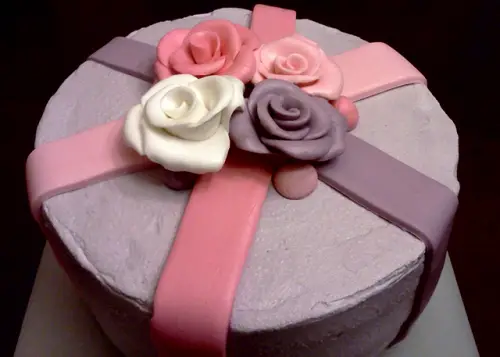
The world of baking has many more choices and styles than most people realize, and sometimes even the bakers themselves can get confused about their option, especially novice ones. Even a small detail like icing can offer many different choices that the layperson may not realize. There are options ranging from buttercream to ganache. However, there are two types of hard icings that seem very much alike, fondant and royal icing. Despite the perceived similarity, there are several differences between these two.
-
Types
The first major difference between royal icing and fondant is that royal icing really refers to only one type of icing, whereas, there are multiple types of fondant icing. Poured fondant has a creamy texture and is used as a filling or coating. Rolled fondant, also called pettinice, is not the same material as poured and is commonly used to decorate wedding cakes. Scultpting fondant is similar to the rolled fondant but it has a stiffer consistency to make it suitable for baking projects that require sculpted elements. And finally, there is sugar paste, which is very similar to the rolled fondant except that it hardens completely.[i]
-
Ingredients
Another difference between the two is going to be with the ingredients used in each. Fondant requires more ingredients than royal icing. Royal icing is primarily made using confectioner’s (icing) sugar and egg whites. Sometimes lime, lemon or cream of tartar can be added to provide an extra layer of flavor.[ii] Since there are several different types of fondant, there are several different ways to make it. The poured fondant is usually just sugar, water, gelatin, and glycerine. Colorings and flavorings, such as lemon or vanilla, may also be added. Rolled fondant includes gelatin (or agar), shortening, icing sugar,[iii] and possibly glycerine. Rolled fondant can also be made using powdered sugar and melted marshmallows. Because it is difficult to prepare, pre-made commercial fondant is often used and this is principally made with sugar and hydrogenated oil, although it may contain other ingredients such as cellulose gum and water. Sculpting fondant uses the same ingredients as rolled fondant, but it is mixed to a stiffer consistency. Sugar paste, like royal icing, is made from egg whites and powdered sugar.[iv]
-
Where they are used
While both royal icing and fondant are types of icing, their uses are very different. Royal icing is much more common and it is used to decorate Christmas cakes, sometimes wedding cakes, gingerbread houses and many other cakes and cookies. It’s versatile because it can be used as either a smooth covering or to create sharp peaks in decorations. While it is most commonly used as an icing, royal icing can also be used when an adhesive is needed in baked goods, such as with gingerbread houses.[v] Poured fondant is commonly used as a filling or coating for cakes, pastries, candies or other sweets. Sometimes lemon, vanilla, colorings, or other flavorings may be added. It is also used as the filling for the Cadbury Crème Egg, which is produced using inverted sugar syrup and processed with invertase. Rolled fondant is used primarily to decorate wedding cakes, and sometimes other cakes. It is becoming more commonly used as a replacement for the use of marzipan and royal icing on wedding cakes. This is because of the increasing nut allergies, and that fondant doesn’t require almond meal, which is an ingredient in marzipan. Sculpting fondant is used when creations must be sculpted from a stiff material and it is common for cake decorations. Since sugar paste hardens completely, it is used for larger cake decorations that need fine detail, such as the bride and groom figures and large flowers or other large decorations.[vi]
-
Hardness or consistency
One of the primary physical differences between royal icing and fondant is going to be how hard each gets. Royal icing starts quite softly and can even be used in pastry piping while the baker is creating shapes or other decorations. Once it is allowed to harden though, royal icing is very hard, which is why it can be used to create peaks.[vii] Poured fondant has a very creamy texture. Once the ingredients are mixed, it is cooked, then cooled slightly and stirred or beaten to incorporate air. This creates the very creamy consistency that makes it perfect for use as a filling or coating (frosting). Rolled fondant has a much different texture. It is created to have a very pliable and dough-like consistency. This makes it easy to cover cakes and manipulate the fondant for decorations. Sculpting fondant is made to a stiffer consistency than rolled fondant as it has to retain its shape once sculpted. Sugar paste, like royal icing, dries to a very hard consistency.[viii] Due to their very different consistencies, fondant is usually rolled out and then placed on the cake, whereas, royal icing is commonly applied in coats.[ix]
-
Health risk
The use of fondant is typically a much safer choice as an icing than either royal icing or recipes with marzipan. Royal icing is prepared with fresh egg whites, which post a risk for salmonella poisoning if they are improperly stored or otherwise handled. Public health officials in the United States recommend using either meringue powder or ready-to-use, pasteurized, refrigerated egg whites as a replacement. When royal icing is used in conjunction with marzipan for decorating wedding cakes, there is risk for allergic reaction from anyone with a nut allergy, as marzipan contains almond meal.[x]











